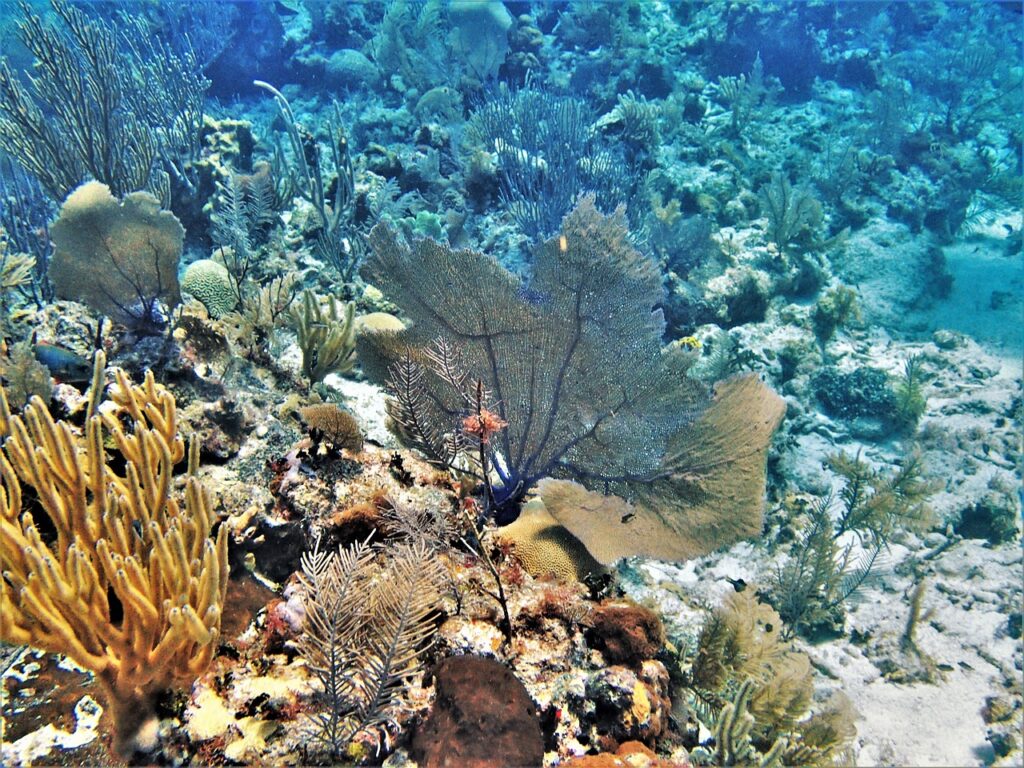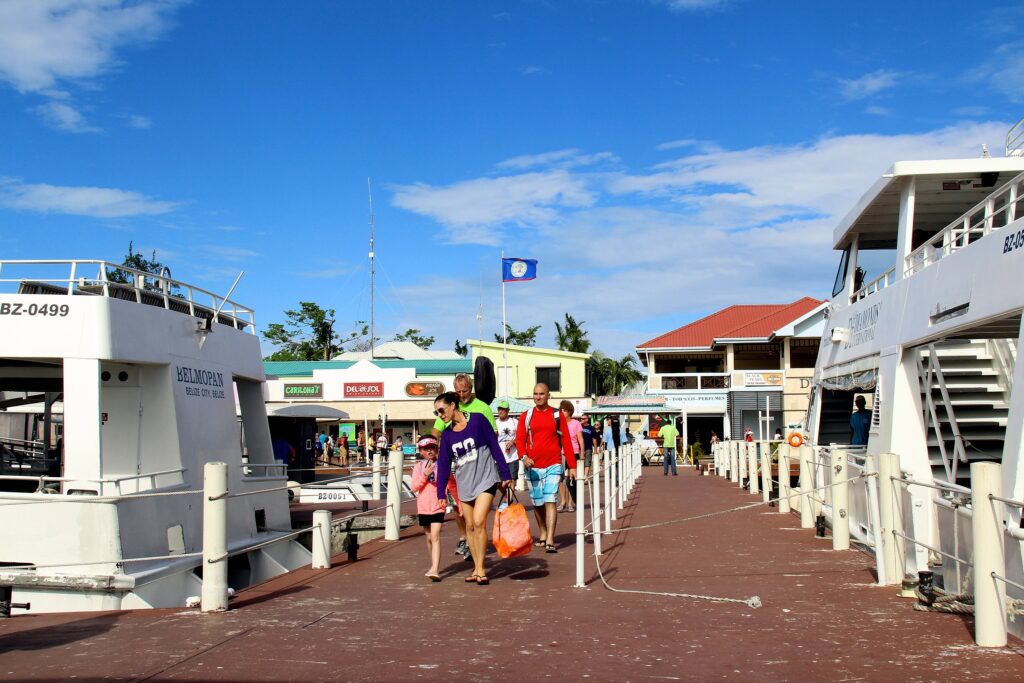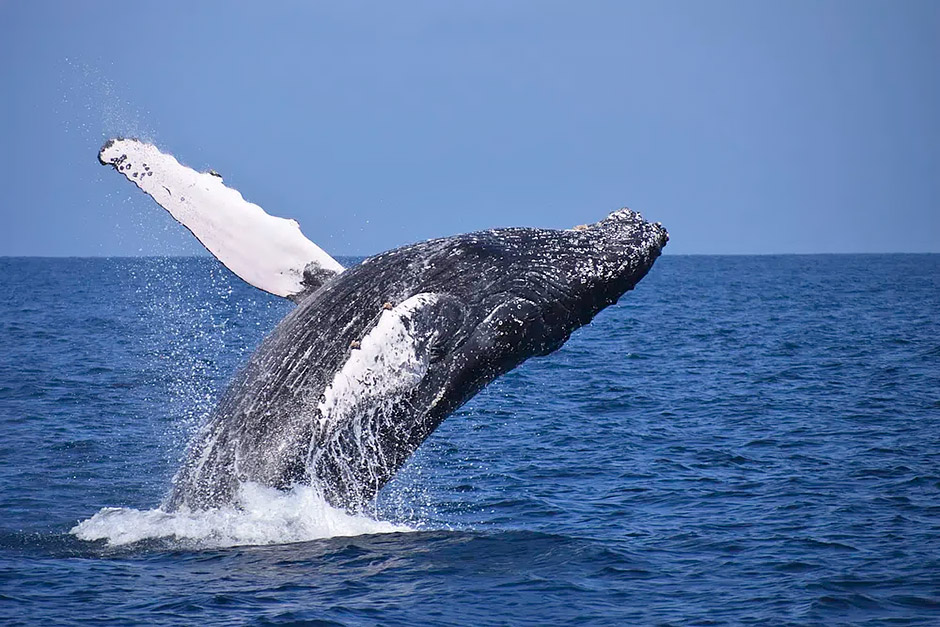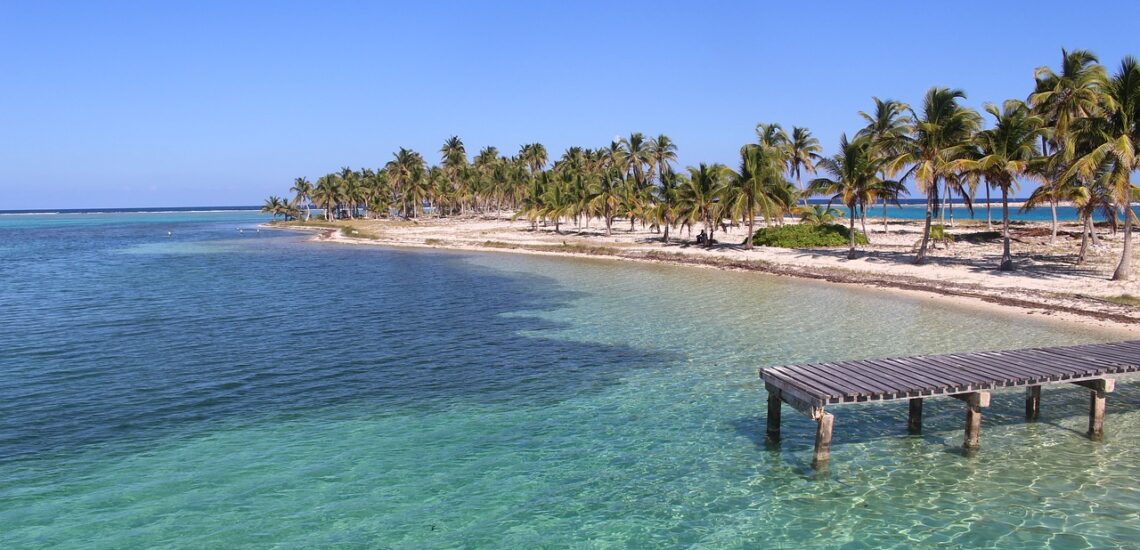Quick facts about Belize:
- Population: Approximately 405,000 people.
- Capital: Belmopan.
- Official Language: English.
- Currency: Belize dollar (BZD).
- Government: Parliamentary democracy and constitutional monarchy, with Queen Elizabeth II as the head of state represented by a governor-general.
- Major Religion: Christianity, with Roman Catholicism being the predominant denomination.
- Geography: Located on the northeastern coast of Central America, bordered by Mexico to the northwest and Guatemala to the west and south, with the Caribbean Sea to the east.
Fact 1: Belize is home to the Belize Barrier Reef
The Belize Barrier Reef stretches along the coast of Belize for approximately 190 miles (300 kilometers), making it one of the most extensive coral reef systems in the Western Hemisphere. This diverse and ecologically significant reef ecosystem supports a wide array of marine life, including colorful coral formations, fish species, marine mammals, and sea turtles.
Belize is also known for its atolls, which are circular coral reef formations surrounding a central lagoon. The most famous of these atolls is Lighthouse Reef Atoll, home to the iconic Great Blue Hole, a massive underwater sinkhole renowned for its deep blue color and unique geological formations.
The Belize Barrier Reef and its associated atolls are protected as part of the Belize Barrier Reef Reserve System, a UNESCO World Heritage site.

Fact 2: There are about 500 species of orchids in Belize’s rainforest
Belize’s tropical rainforests, with their humid climate and rich biodiversity, provide an ideal habitat for orchids, which are known for their intricate flowers and diverse forms. Belize’s rainforests are estimated to harbor hundreds of orchid species, including epiphytic orchids that grow on trees, lithophytic orchids that grow on rocks, and terrestrial orchids that grow in the forest understory. These orchids display a remarkable variety of colors, shapes, and sizes, ranging from delicate miniature blooms to large, showy flowers.
Among the most notable orchid species found in Belize are the national flower, the black orchid (Encyclia cochleata), as well as the butterfly orchid (Psychopsis papilio), the brassavola orchid (Brassavola nodosa), and the vanilla orchid (Vanilla planifolia), which is cultivated for its edible vanilla pods.
Fact 3: There are hundreds of Mayan ruins all over Belize.
Belize boasts a rich cultural heritage, with a significant portion of its landscape dotted with ancient Mayan cities, temples, ceremonial centers, and residential complexes. These archaeological sites offer valuable insights into the civilization and achievements of the ancient Maya, who inhabited the region for thousands of years.
Among the most prominent Mayan ruins in Belize are:
- Caracol: Located in the Cayo District, Caracol is one of the largest Mayan archaeological sites in Belize, boasting impressive temples, pyramids, and plazas. It was a major political and economic center during the height of the Mayan civilization.
- Xunantunich: Situated near the town of San Ignacio, Xunantunich is renowned for its towering El Castillo pyramid, which offers panoramic views of the surrounding jungle and countryside.
- Altun Ha: Located in the Belize District, Altun Ha is known for its well-preserved structures, including the Temple of the Masonry Altars, which contains a famous jade head representing the Mayan sun god, Kinich Ahau.
- Lamanai: Nestled along the New River Lagoon, Lamanai is one of the longest continuously occupied Mayan sites in Belize, with evidence of habitation dating back over 3,000 years. It features impressive pyramids, temples, and a ball court.
- Cahal Pech: Situated near the town of San Ignacio, Cahal Pech is a compact Mayan site known for its royal residences, ceremonial platforms, and tombs.
Note: Planning a trip to Belize? Check here if you need an International Driver’s License to rent and drive a car.

Fact 4: The old name of the country was British Honduras
Throughout the colonial era, British Honduras remained under British control, with the British Crown exercising political, economic, and military authority over the territory.
In 1973, British Honduras underwent a name change, adopting the name “Belize” as part of a broader movement towards independence and national identity. On September 21, 1981, Belize officially gained independence from the United Kingdom, becoming a sovereign nation.
Fact 5: Belize has more than 400 islands
The islands of Belize offer a variety of attractions and activities for visitors, including pristine beaches, vibrant coral reefs, and opportunities for snorkeling, diving, fishing, and other water sports. Many of the smaller islands are part of protected marine reserves or national parks, offering opportunities for eco-tourism and wildlife observation.
Among the most famous islands in Belize are Ambergris Caye, Caye Caulker, Tobacco Caye, and Laughing Bird Caye, each offering its own unique charms and attractions.

Fact 6: Belize is home to the world’s first and only jaguar sanctuary
The Cockscomb Basin Wildlife Sanctuary, located in southern Belize, was established in 1984 with the primary objective of protecting the region’s jaguar population and their habitat. The sanctuary covers approximately 150 square miles (400 square kilometers) of tropical rainforest and is managed by the Belize Audubon Society.
The sanctuary’s creation was driven by concerns about the decline of jaguar populations due to habitat loss, poaching, and human-wildlife conflict. Today, it serves as a crucial refuge for jaguars and other wildlife species, offering protection from hunting and habitat destruction.
Fact 7: Belize City is the largest city and formerly the capital city
As the largest city in Belize, Belize City played a significant role in the country’s political, economic, and cultural development. However, its status as the capital was eventually transferred to Belmopan in 1970 due to concerns about the city’s vulnerability to hurricanes and flooding.
Despite no longer being the capital, Belize City remains an important center of commerce, transportation, and cultural activity in Belize. It is home to various government offices, businesses, educational institutions, and historical landmarks.

Fact 8: Neighboring Guatemala has territorial claims to Belize
The territorial dispute between Belize and Guatemala stems from colonial-era agreements and border demarcations. Guatemala, which shares a land border with Belize to the west and south, has periodically asserted claims to portions of Belizean territory, particularly the southern region known as the Belizean Sarstoon River and adjacent areas.
Following Belize’s independence from Britain in 1981, Guatemala initially refused to recognize Belize as a sovereign nation and continued to assert its claims to Belizean territory. However, both countries have since engaged in diplomatic efforts to address the dispute and have made progress in negotiations facilitated by international organizations such as the Organization of American States (OAS).
Fact 9: Belize has a good place for whale watching
Belize’s coastal waters are home to various species of whales and dolphins, including humpback whales, sperm whales, Bryde’s whales, and several species of dolphins. The waters off Belize serve as a migratory route and feeding ground for some whale species, making occasional sightings possible, especially during their seasonal migrations.
It’s important to note that whale sightings in Belize are less predictable than in some other regions, and encounters cannot be guaranteed. However, for nature enthusiasts exploring Belize’s coastal waters, the possibility of encountering these magnificent marine mammals adds an exciting element to their experience.

Fact 10: The tallest structure in Belize since Mayan times
Caracol, located in the Cayo District of Belize, was one of the most important ancient Maya cities in the region. The main temple at Caracol, known as the Sky Palace or Caana (translated as “Sky Place”), is the tallest man-made structure in Belize, standing approximately 43 meters (141 feet) tall.
Built during the Classic Period of Maya civilization (circa 600-900 AD), the Caracol Temple served as a ceremonial and administrative center for the ancient Maya. It features multiple tiers and platforms.

Published April 27, 2024 • 7m to read





